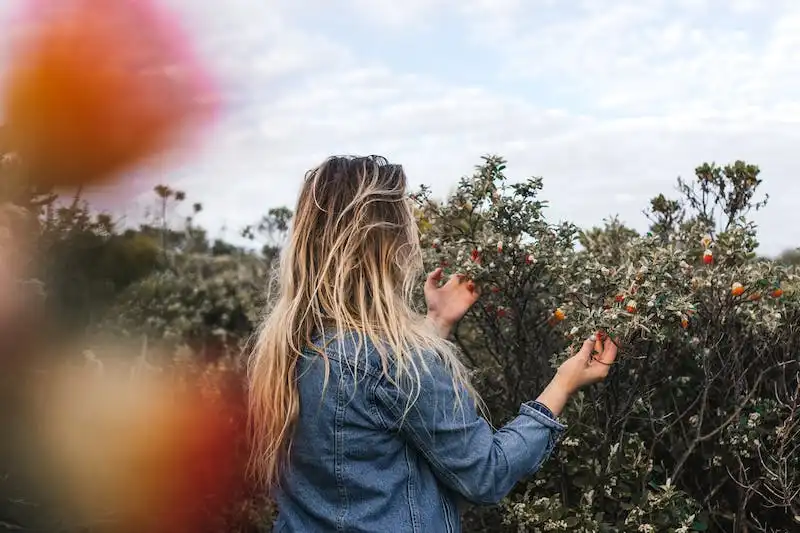If you have a lucky bamboo plant growing in soil, it’s important to know the best way to water it to ensure its health and longevity. Lucky bamboo, also known as Dracaena sanderiana, is a popular plant for both its aesthetic appeal and its association with good luck and positive energy, according to the principles of feng shui. However, without proper care, this plant can succumb to diseases and other issues.
One important thing to note about lucky bamboo is that it’s not actually a bamboo at all – it belongs to the Dracaena family. Lucky bamboo plants have thick stalks and can grow in a variety of shapes and forms. They are known for their ability to thrive in low light conditions and need only a minimal amount of care to stay healthy.
When it comes to watering your lucky bamboo, one key factor to consider is the type of water you use. Lucky bamboo prefers to be watered with bottled or filtered water, as tap water can contain chemicals that may be harmful to the plant. Water your lucky bamboo every week or when the top inch of soil becomes dry. Be careful not to overwater, as this can lead to root rot and other issues.
When watering, pour the water directly into the soil, ensuring that it reaches all parts of the potting mix. Allow any excess water to drain out from the bottom of the pot. If you notice any yellow or brown leaves on your lucky bamboo, this may be a sign of overwatering or improper drainage. Trim off any longer or discolored leaves to maintain the plant’s aesthetic appeal.
In addition to regular watering, lucky bamboo also benefits from occasional fertilization. Use a balanced liquid fertilizer, diluted to half the recommended strength, every two to four weeks during the growing season. This will supply the plant with essential nutrients to support its growth.
Another important aspect of caring for lucky bamboo is choosing the right pot and placement. Lucky bamboo can be grown in soil or in water, but if you choose to grow it in soil, make sure the pot has drainage holes at the bottom. Avoid using pots without drainage, as this can lead to waterlogged conditions and root rot. Place your lucky bamboo in a location with bright, indirect light for best results.
By following these simple tips, you can ensure that your lucky bamboo plant stays healthy and vibrant. Remember to water it regularly, using the right type of water and avoiding overwatering. Consider repotting your lucky bamboo every two years to refresh the soil and provide room for growth. With proper care and attention, your lucky bamboo will bring positive energy and a touch of nature into your home or office.
FAQs:
Q: How often should I water my lucky bamboo in soil?
A: Water your lucky bamboo every week or when the top inch of soil becomes dry. Be sure to use filtered or bottled water to avoid harmful chemicals.
Q: Can I keep my lucky bamboo in a bowl of water instead of soil?
A: Yes, lucky bamboo can be grown in water. Just make sure to change the water every 1-2 weeks and keep the roots submerged.
Q: Is lucky bamboo toxic to humans or pets?
A: Lucky bamboo is not considered toxic, but it’s always a good idea to keep plants out of reach of curious pets and children.
In conclusion, taking care of your lucky bamboo plant in soil is a simple practice that can yield great rewards. By providing the right amount of water, light, and nutrients, you can ensure that your lucky bamboo thrives and brings happiness and positive energy into your life.
About the author: This article was written by a real plant lover at ProFlowers Botanical.
How to Grow Lucky Bamboo
Growing lucky bamboo is a quick and easy way to add a touch of greenery to your home or office. Lucky bamboo (Dracaena sanderiana) isn’t a “real” bamboo, but it has similar growth habits and can be grown in soil or water. Here are some tips on how to grow lucky bamboo in soil:
- Choose a well-drained soil for your lucky bamboo. It should be a fine-textured soil that allows water to drain freely.
- Before planting your lucky bamboo, make sure your pot has drainage holes at the bottom. This will prevent overwatering and root rot.
- When planting the bamboo, make a small hole in the soil with your finger or a thin stick. Gently place the bamboo in the hole, making sure the roots are covered with soil.
- Water your lucky bamboo thoroughly after planting. The soil should be moist, but not soggy. Make sure to water the bamboo until water starts to drain out of the bottom of the pot.
- Keep your lucky bamboo in a location that receives bright, indirect light. Avoid placing it in direct sunlight, as this can burn the leaves.
- Water your lucky bamboo once a week or when the top inch of soil feels dry. Make sure to water it slowly and evenly, allowing the water to be absorbed by the soil.
- When repotting your lucky bamboo, choose a pot that is one size larger than the current one. This will give the roots more room to grow. Make sure to use well-drained soil and follow the same planting steps as mentioned above.
- If your lucky bamboo leaves turn yellow or brown, it may be a sign of overwatering or too much direct sunlight. Adjust the watering schedule and move the plant to a location with less direct light.
- Pruning your lucky bamboo can help maintain its size and shape. Use clean shears to trim the stems to the desired length. You can also propagate your lucky bamboo by cutting a stem below a node and placing it in water or soil.
Note: Lucky bamboo can also be grown in water. Use a vase or container with the appropriate size and fill it with clean water. Change the water every two weeks to prevent the growth of algae. If you choose to grow lucky bamboo in water, make sure to keep the roots submerged and provide bright, indirect light.
Frequently Asked Questions (FAQs) about Growing Lucky Bamboo:
- Q: How long does it take for lucky bamboo to grow?
- A: Lucky bamboo can grow about an inch per week, depending on the growing conditions and variety.
- Q: How big can lucky bamboo get?
- A: Lucky bamboo can grow up to 3 feet tall if given the right conditions and care.
- Q: Can lucky bamboo survive in low light?
- A: Lucky bamboo can survive in low light conditions, but it will grow slower and may become leggy. It’s best to provide bright, indirect light for optimal growth.
- Q: Can lucky bamboo be grown in a small pot?
- A: Lucky bamboo can be grown in small pots, but it may need to be repotted into a larger pot as it grows to ensure sufficient root space.
- Q: What’s the difference between water-grown and soil-grown lucky bamboo?
- A: Water-grown lucky bamboo is grown directly in water, while soil-grown lucky bamboo is grown in well-drained soil. Both methods can result in healthy growth if care is taken to provide the right conditions.
With the right care and attention, lucky bamboo can thrive and become a great addition to your indoor space. It’s a low-maintenance plant that can be a great starting point for beginners in the world of indoor gardening. Just remember to water it regularly, provide enough light, and avoid common problems that can cause the leaves to turn yellow or brown. Enjoy watching your lucky bamboo grow and bring good luck into your life!
Plant Care
In order to keep your lucky bamboo plant healthy and thriving, it’s important to provide the proper care and attention. Below are some botanical tips to help you achieve the best results with your lucky bamboo plant:
| Watering | Keep the soil moist, but not waterlogged. It’s important to water your lucky bamboo in soil from above rather than submerging the roots in water. This will help prevent root rot and other water-related problems. If the leaves turn yellow, it may be a sign of overwatering or underwatering. |
| Light | Lucky bamboo plants thrive in bright, indirect light. Keep them away from direct sunlight, as it can scorch the leaves. If the plant is not getting enough light, it may become pale and weak. |
| Temperature and Humidity | Lucky bamboo plants prefer temperatures between 65°F and 90°F (18°C and 32°C). They also thrive in higher humidity levels, so it’s a good idea to mist the leaves with water occasionally or use a humidifier to create a more suitable environment. |
| Fertilizing | Feed your lucky bamboo plant with a balanced liquid fertilizer once a month during the growing season. Be sure to follow the instructions on the fertilizer packaging for the correct dosage. |
| Pruning | If your lucky bamboo plant becomes too tall or overcrowded, you can prune the stems to maintain its desired shape. Use sharp, clean scissors to make a clean cut just above a node (the raised part on the stem where the leaves grow). |
| Repotting | When your lucky bamboo plant outgrows its current pot or the soil becomes compacted, it’s time to repot. Gently remove the plant from its current container, loosen the roots, and place it in a slightly larger pot with fresh potting soil. Be sure to water the plant thoroughly after repotting. |
| Pests and Diseases | Lucky bamboo plants are generally resistant to pests, but they can occasionally attract scale insects. If you notice tiny brown or yellow bumps on the leaves or stem, wipe them off with a cotton swab dipped in rubbing alcohol. If the problem persists, consult a plant care expert. |
| Propagation | If you want to propagate your lucky bamboo plant, you can do so by taking stem cuttings. Simply cut a healthy stem just above a node and place it in a container of water. Roots should start to grow within a few weeks, at which point you can transfer the cutting to soil. |
| Frequently Asked Questions (FAQs) | Here are some common questions about lucky bamboo plant care: |
| Q: How often should I water my lucky bamboo plant? | A: Water your lucky bamboo plant once a week or when the top inch of soil feels dry to the touch. |
| Q: Can I keep my lucky bamboo plant in water instead of soil? | A: Yes, lucky bamboo plants can also be grown hydroponically in water. Just be sure to change the water every week and rinse the roots thoroughly to prevent rot. |
| Q: Is lucky bamboo toxic to pets or humans? | A: Lucky bamboo is considered non-toxic to cats and dogs. However, ingesting large quantities may cause digestive discomfort. Keep the plant out of reach of small children and pets. |
| Q: What is the difference between lucky bamboo and a bamboo plant? | A: Lucky bamboo, also known as Dracaena sanderiana, is not a true bamboo. It is a member of the Asparagaceae family and is often used in feng shui practices. Unlike bamboo plants, lucky bamboo grows in water or soil and has thin, ribbon-like leaves. |
Whether you’ve just purchased your first lucky bamboo plant or have had one for a while, following these care tips will ensure that your plant thrives and brings you happiness and good luck.




